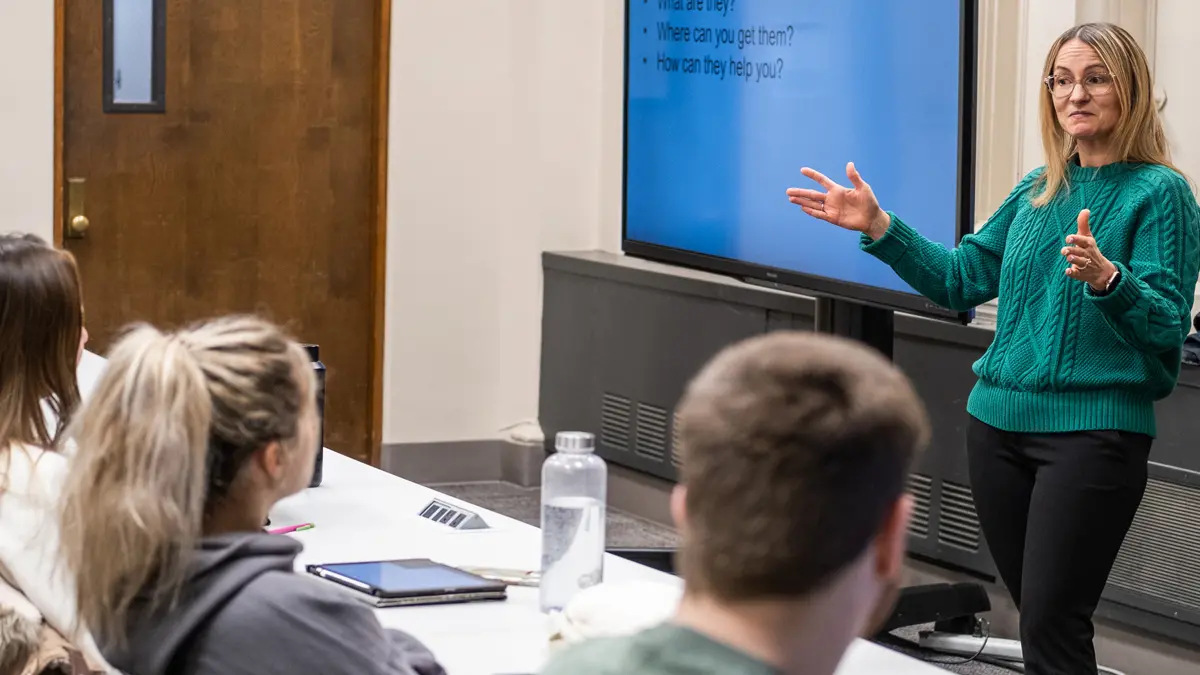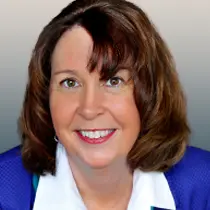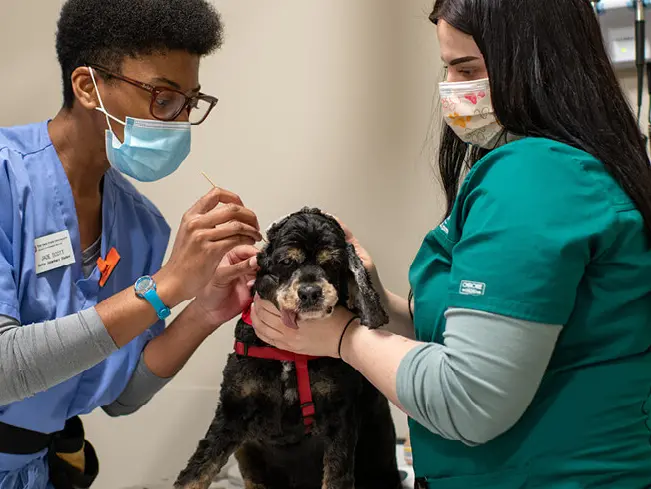College of Optometry intentionally builds leaders
Students not only get training to be excellent doctors. They learn to become better problem-solvers and innovators to advance the field.

The first-year students in this College of Optometry class, including (from left) Taylor Boyd, Elise Frazee and Mason Clutter, signed up to take optional leadership instruction from Jen Bennett, the college’s director of student services. (Photo by Jodi Miller)
In choosing where to study optometry after earning her undergraduate degree in Florida, Juliana Mazzotta wanted the best education — that was a given. But she was looking for more, too.
“I want to be the best leader in the field of optometry,” she says, “and I knew Ohio State was going to allow me to do that.”
Mazzotta was drawn to the Ohio State College of Optometry’s leadership training program, believed to be the first of its kind at a school or college of optometry. The I-CE (pronounced “I see”) program helps students develop skills that lead to innovation, credibility and effectiveness.
Dr. Mike Earley ’88 OD, ’88 MS, ’92 PhD helped to create the I-CE program, which debuted in 2018. As associate dean for academic affairs in the College of Optometry, Earley believes creating future leaders is essential.
“There are a lot of problems in health care, and we need our students to tackle them,” he says.
Ensuring access to vision care is one. Bringing more diversity to the field of practitioners is another. And because legislators decide the scope of practice in each state, optometrists need to advocate for the profession.
Earley recruited Jen Bennett, director of student services, to create a leadership program that prepares students to address these and other issues. With guidance and help from Dean Karla Zadnik, Bennett and her team surveyed College of Optometry alumni to develop a list of key skills and traits needed to be an effective leader, then created a plan to embed leadership training into all four years of study.
“While other optometry schools might discuss leadership or provide a leadership class, it’s baked into everything we do here,” Bennett says. “Our program has tentacles.”
In their first year, students assess their own leadership skills and ask others to appraise them, too. From there, students create a plan to improve their skills. The assessment is repeated in the third year, so students can see how they’ve evolved and where they can continue to grow. Resources include coaching from professors, presentations on leadership and opportunities to participate in community activities.
“We learn that anyone can be a leader — there is not just one leadership style,” says third-year student Shihij Takoo ’20, co-president of the Ohio chapter of the National Optometric Student Association.
As a result of her leadership assessment, Takoo says she learned to delegate more, which let her take on leadership roles in four organizations without getting bogged down. She’s also honed her communication skills, helping her advocate more effectively for the college’s diversity and inclusion initiatives.
“Ohio State wants every person who graduates to be a leader in the field of optometry. They cultivate it so that everyone is influential in some way, whether that’s on a community level, from a practice-based level or on a national or state level.”
As for Mazzotta, now in her second year, she’s thrived in several leadership roles. She’s secretary/treasurer for her class, serves as a trustee for the American Optometric Student Association and mentors new students.
“One of the reasons I love Ohio State is because they encourage us to be involved in clubs and organizations,” she says. “They understand it isn’t just about doing well academically, it’s about being a leader in the profession.
“They know it’s going to make us the best optometrists we can be, and it will allow us to serve our communities in the best possible way.”
College of Optometry
Students finish the four-year professional optometry program with a doctor of optometry degree; some earn a master of science in those years, too. The college also offers a four-year PhD program and advanced fellowships.
Class of 2022: Of the most recent graduates, 96% passed the national board exams by graduation and 88% had jobs.
Class of 2026: For this year’s new class, 511 students applied and 69 were admitted. “We want to admit the future leaders, the next generation of professors and the most successful practitioners,” Dean Karla Zadnik says.
Learn more: optometry.osu.edu



